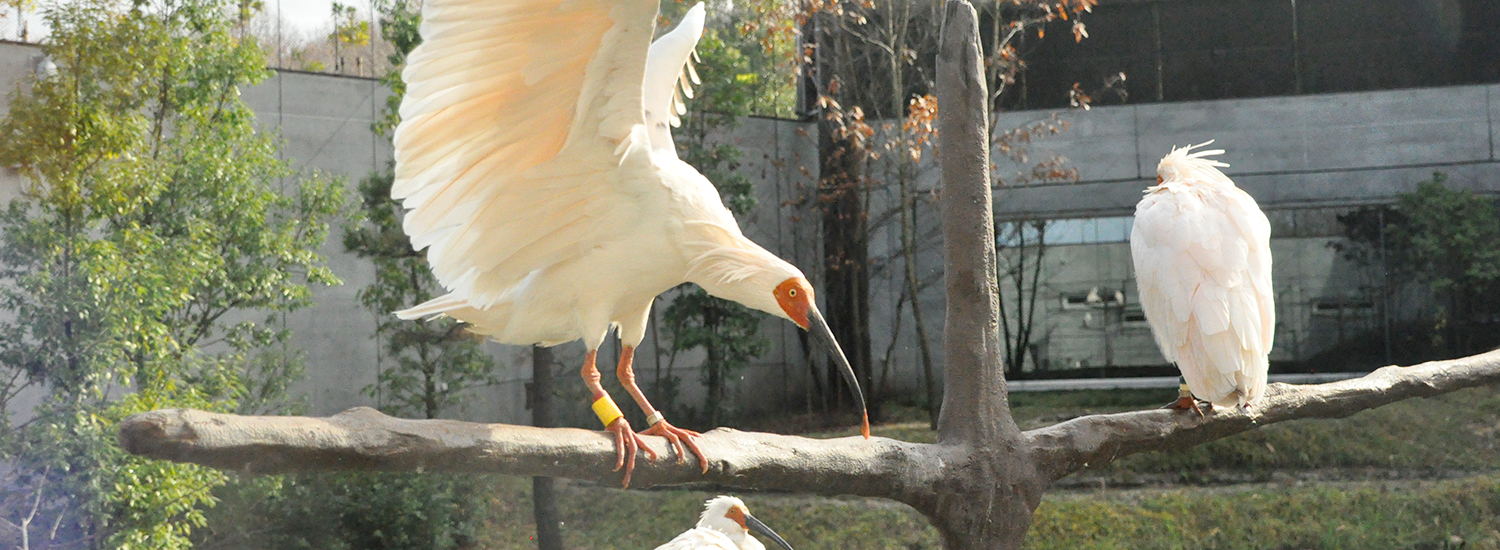About the Crested Ibis
- HOME
- Crested Ibis
Ecology of the Crested Ibis
The crested ibis (Nipponia nippon) is a bird similar to the heron, and was once widely found in Japan, China, the Korean Peninsula and Taiwan. It is approximately 75cm long, with a wingspan of 40cm (140cm when spread), and weighs from 1.6-2kg. Their entire body is white, but their wings and tail are a beautiful pink color (known as toki-iro in Japanese). The ibis feed on creatures that live in wetlands and rice paddies. In addition to loaches, pond snails, frogs and tadpoles, they also eat insects such as earthworms, grasshoppers and crickets, as well as crabs. They do not eat any cereals and are entirely carnivorous.

History of the Crested Ibis
The crested ibis was once common throughout Japan, but overhunting and habitat degradation since the Meiji period (1868-1912) led to a dramatic decline in its numbers and eventual disappearance. In 1970, the last crested ibis in Honshu, Nori, was caught in Noto and transferred to the Sado Ibis Conservation Center to be bred. Similarly, in 1981, the last five remaining crested ibis in Japan were caught on Sado Island, leading to the bird’s disappearance from the wild. On the other hand, in 1999, artificial breeding by a pair (Yoyo and Yangyang) donated from China was successful, and the first Japanese crested ibis chick in captivity, Yuyo, was born. Since then, the number of captive-bred crested ibis has steadily increased, and efforts to restore the natural environment on Sado Island have continued. In 2008, the first crested ibis trained for acclimation to the wild was released on Sado Island, where many currently live wild and often fly to Ishikawa.

Breeding of the Crested Ibis
The ibis breeding season is generally from February to July. When the birds reach the age of two or three, they find a mate for breeding. Pairs consist of a male and a female. The ibis leave the flock and each pair builds a nest in a tree of their choice, where they lay their eggs from around April. The male and female take turns keeping the eggs warm, and after about 28 days, the shell is broken and chicks are born. The male and female cooperate in raising the chicks, which hatch around June and leave the nest after about 40 days.




